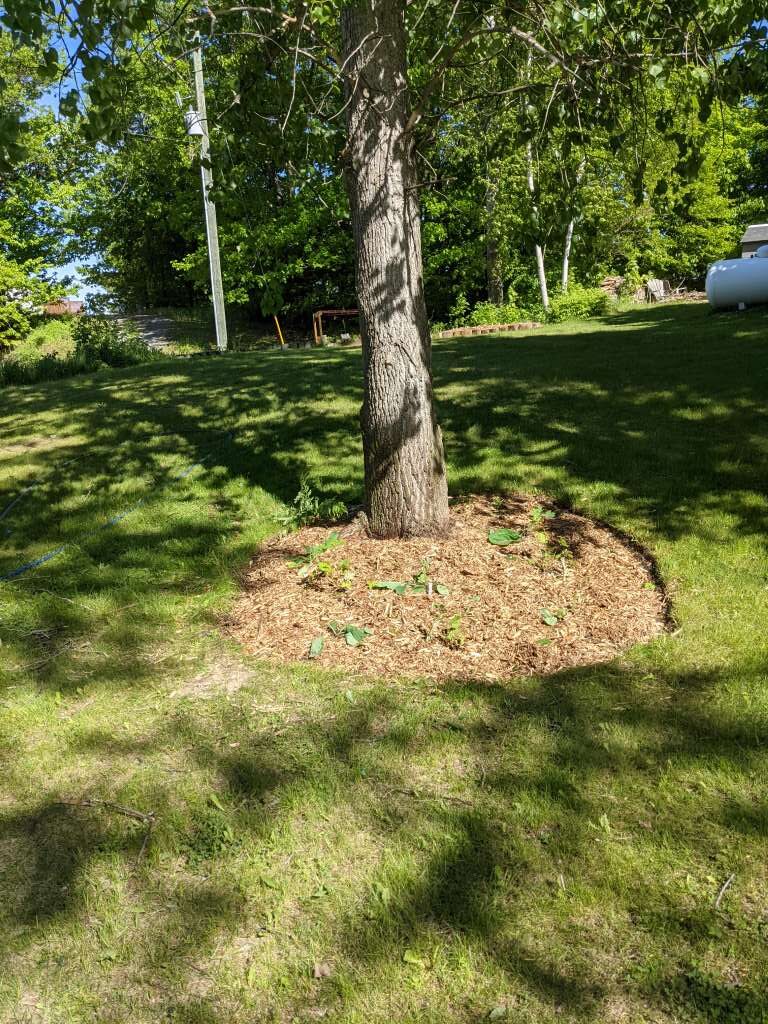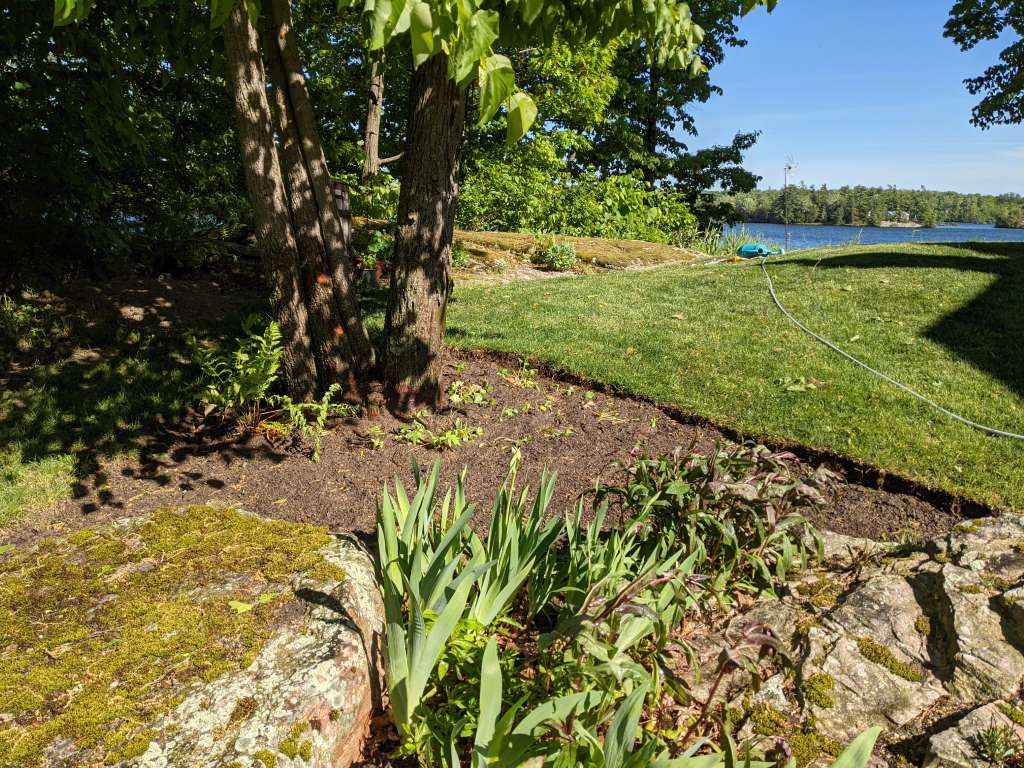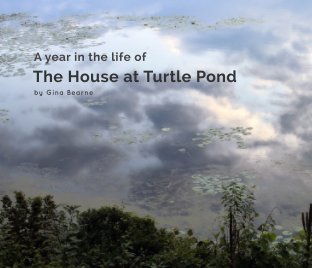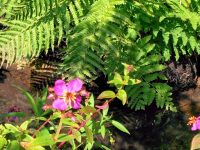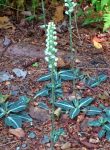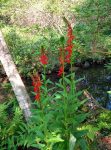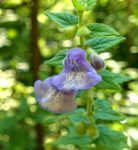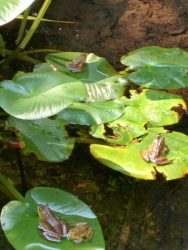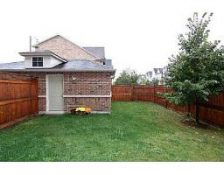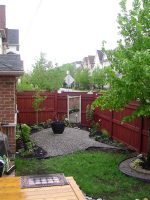It is my intention to add in updates and, in particular, progress photos over time so as to capture the garden evolution progress!
The last few weeks have been a whirlwind of ‘garden evolution’ activity. In Ontario, so often a heatwave follows rapidly on the heels of the last frost, making garden clearance and planting tricky. This year has been no exception, with the last few days at above 30C (86F) not much more than a week after the final frost. Thankfully we are back to the low 20s now, better for working and for the plants.
We’ve managed to plant four more native trees, six native shrubs and a number of perennials as well as starting my Three Sisters planting as is supposed to be traditional with the corn seeds going into the ground three days before the May full moon! Most of this year’s vegetables are now planted. Hopefully they will survive the run of three cooler nights (down to 6C) later this week.
Rockery

Beginning to overflow in abundance. . . the rockery at the front of the house. As I have learned more about native plants and the impact of invasive species, it is irksome and somewhat overwhelming to spot non-native invaders, undoubtedly planted in good faith and often recommended, that really should be removed; Bugleweed(Ajuga reptans), Red Deadnettle (Lamium pupureum) and more. On the plus side, there are many natives forming part of this cascade, including Prairie Smoke (Geum triflorum), which I love and seemed to have lost over the winter; native geraniums, Spiderwort (Tradescantia), Echinacea, Mountain Mint, and Asters. There are also native cultivars like Bleeding Heart (Dicentra spectabilis) and Aquilegia variants. As well as the Prairie Smoke, I added Field Pussytoes (Antennaria nglecta) and Winecup (Callirhoe involucrata).
Native Perennials
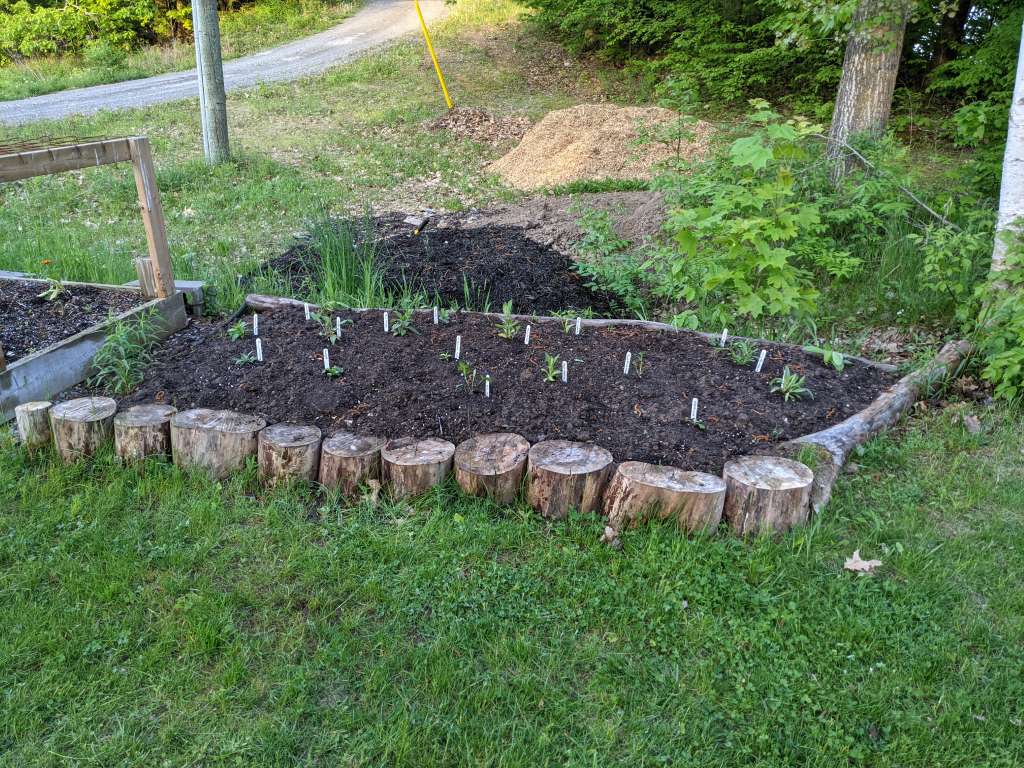
This bed, new for this year, is primarily a cutting bed but also a place to try out native perennials to guide later plantings, not to mention a pollinator patch. Most of these plants are pink, purple, blue or white.
- Black Eyed Susan (Rudbeckia Hirta)
- Blue False Indigo (Baptisia australis)
- Blue Vervain (Verbena hastata)
- Great Blue Lobelia (Lobelia siphilitica)
- Golden Alexanders (Zizia aurea)
- Harebell (Campanula rotundifolia)
- Hairy Beardtongue (Penstoemon hirsutus)
- Hoary Vervain (Verbena stricta)
- Obedient Plant (Physostegia virginiana)
- Pearly Everlasting (Anaphalis margaritacea)
- Purple Coneflower (Echinacea purpurea)
- Purple Prairie Clover (Dalea purpurea)
- Rattlesnake Masters (Eryngium yuccifolium)
- Sky Blue Aster (Symphyotrichum oolentangiense)
- Smooth Aster (Symphyotrichum laeve)
- Spotted Bee Balm (Monarda punctata)
- Wild Bergamot (Monarda fistulosa)
- Wild Quinine (Parthenium hispidum)

The Perennials bed flanks our asparagus bed, now in its third year, which has another cutting bed on the other side. This is currently a mish mash based on seeds I could get at the last minute last year! Next year I hope to fill this with more native perennials, probably focusing on the reds and golds. A few other perennials were slotted into gaps, notably Turtle Head (Chelone glabra), Blanket Flower ( Gaillardia aristata) and Cardinal Flower (Lobelia cardinalis), which I love not least for its ability to attract hummingbirds.
Reducing Grassed Areas
Another project we have begun to address is reducing the amount of our property kept mown. We are trying to do this in a way that is mindful of keeping walking and working space as free from ticks as possible. Where we need to keep an area cut, we are trying to interplant with clover and to oversow with slow growing, drought tolerant seed (Eco-Lawn).
One of the first things we are tackling is underplanting some of our trees. This has the additional advantage of removing some of the ‘awkward to mow’ areas. I hope we will manage to do this without too much damage to the trees!
We have started with just a couple of trees this year. One is underplanted with Virginia Bluebells (Mertensia virginica), Yellow Wood Poppies (Stylophorum diphyllum) and ferns. The other has various Spring favourites from other areas of our garden. I moved ferns, violets, False Solomon’s Seal, Canada Anemone and Canadian Wild Ginger, even a Trillium around the tree but have just seeded the rest with commercial wildflower seeds for this summer before planting more thoughtfully in the Fall or next Spring.
Over time, we also plan to add in swathes of wildflowers, cut through with mown paths. We will need to ensure that we smother existing growth where we want to do this, so it will take time. The cutting beds will help us decide on the planting for these areas.
Trees and Shrubs
We started our tree planting for this year with five white pines for succession planting in our pine grove.
Last weekend we added four more native trees and three plants each of two native shrubs.

We planted Black Cherry (Prunus serotina) in the clearing created by the beavers. It can grow to 60 ft at up to 3 ft per year and hopefully will give a blossom highlight in Spring and lots of fruit for wildlife.
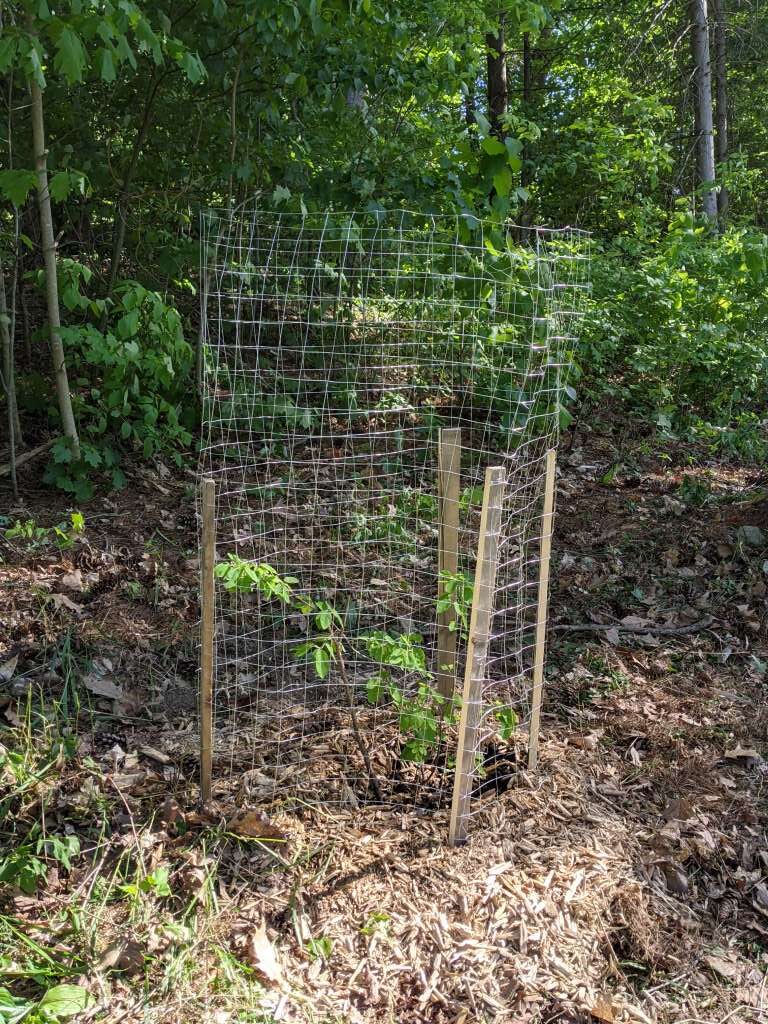

Serviceberry (Amelanchier Laevis), a big favourite of mine, went in at the edge of our Pine Grove, a small tree with lovely blossom and berries. In Toronto the racoons tended to vandalised our Serviceberry for its fruit!
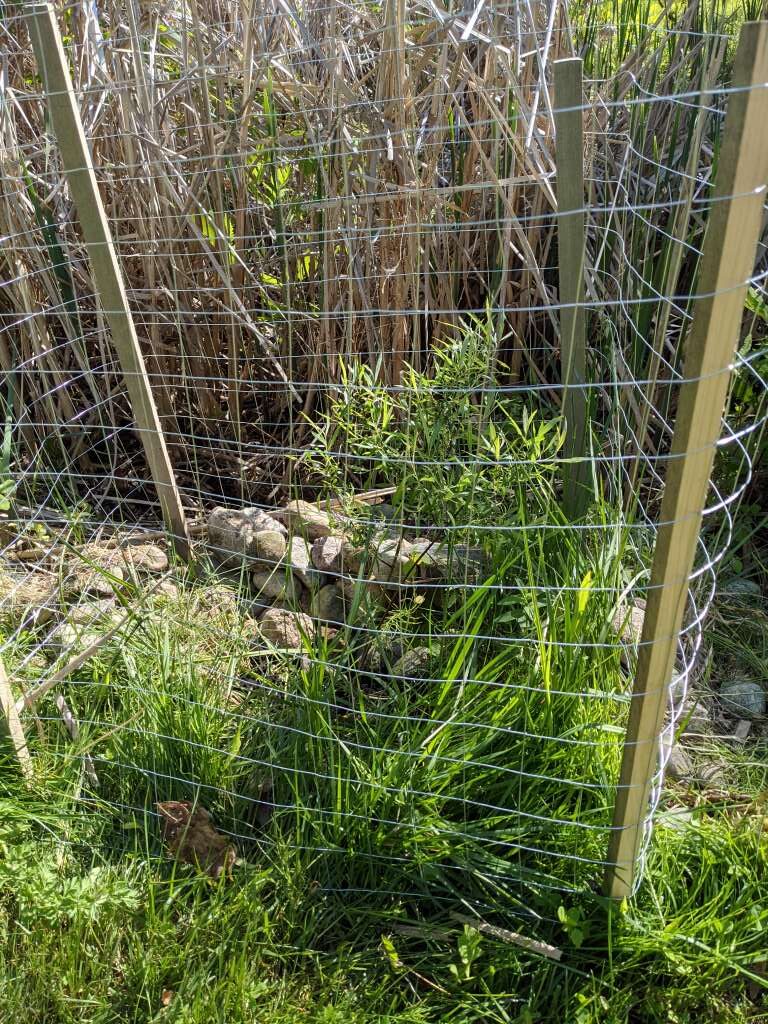
We already have Weeping Willows (not native, but I love them) and Bebb’s Willow, but I finally have the Pussy Willow (Salix discolor) I always wanted.


Backing the edge of our pond we added three Spicebush (Lindera benzoin) that will hopefully form a wall of yellow blossom in the Spring (and more berries for wildlife if we’ve successfully managed to get both male and female plants).

The other new shrub is Winterberry (Ilex verticillata), our native Holly, not really like European Hollies. It does have red berries though (again assuming we have male and female plants).

I always understood that traditionally Holly should be paired with Rowan for protection against malevolent beings. So, on the other side of the driveway, there is a Mountain Ash (Sorbus americana). It’s another tree I’ve always loved.
Vegetable Bed to Kitchen Garden!
How did we come to expand from a vegetable bed to a kitchen garden?!

This was the original vegetable bed! To the right you can see the Hugelkultur bed we added last year. This year’s plantings include: zucchini, bush beans, broad beans, snow peas, lettuce, radishes, eggplant, cantaloupe, baby watermelon, spaghetti squash, delicata squash, peppers and herbs various.

We added more raised beds two or three years ago. These were fenced in last Fall and now have additional beds at either end, as well as built in planters outside at the front. Sunflowers to the fore, onions, chard tomatoes, a Three Sister mound (corn, pole beans, squash), cucumbers, more pole beans, with calendula, marigolds and nasturtiums outside in the front planters.
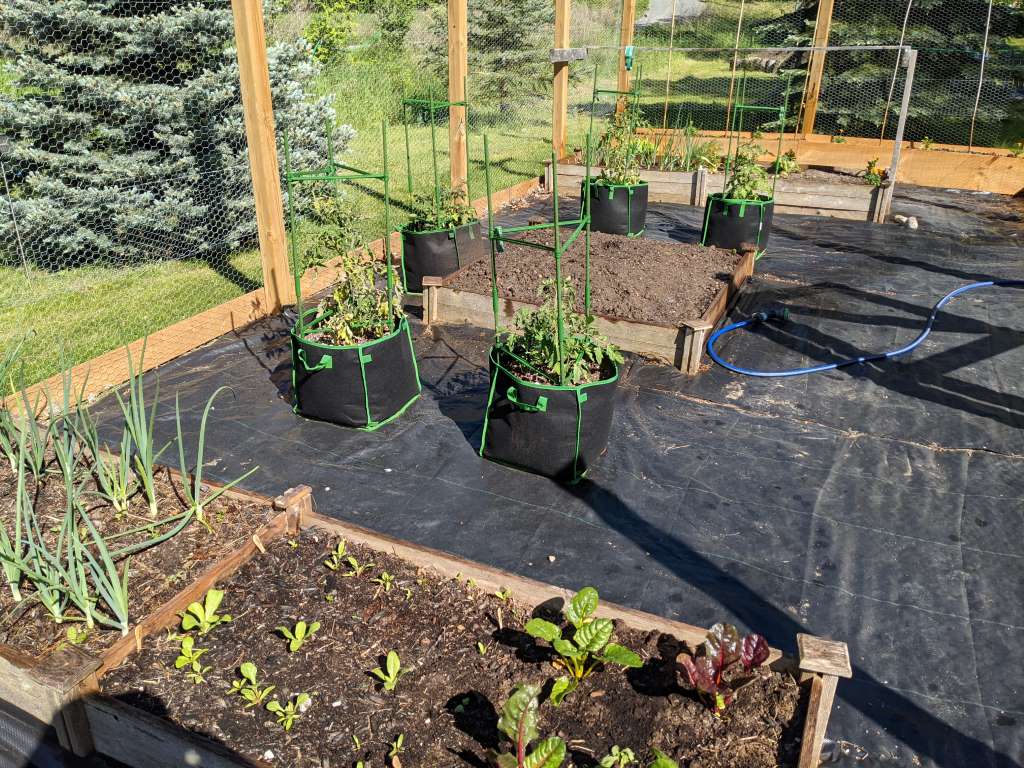
Inside the cage . . . The makings of an irrigation system have just arrived! There is getting to be too much watering to do it by hand, plus it is wasteful.
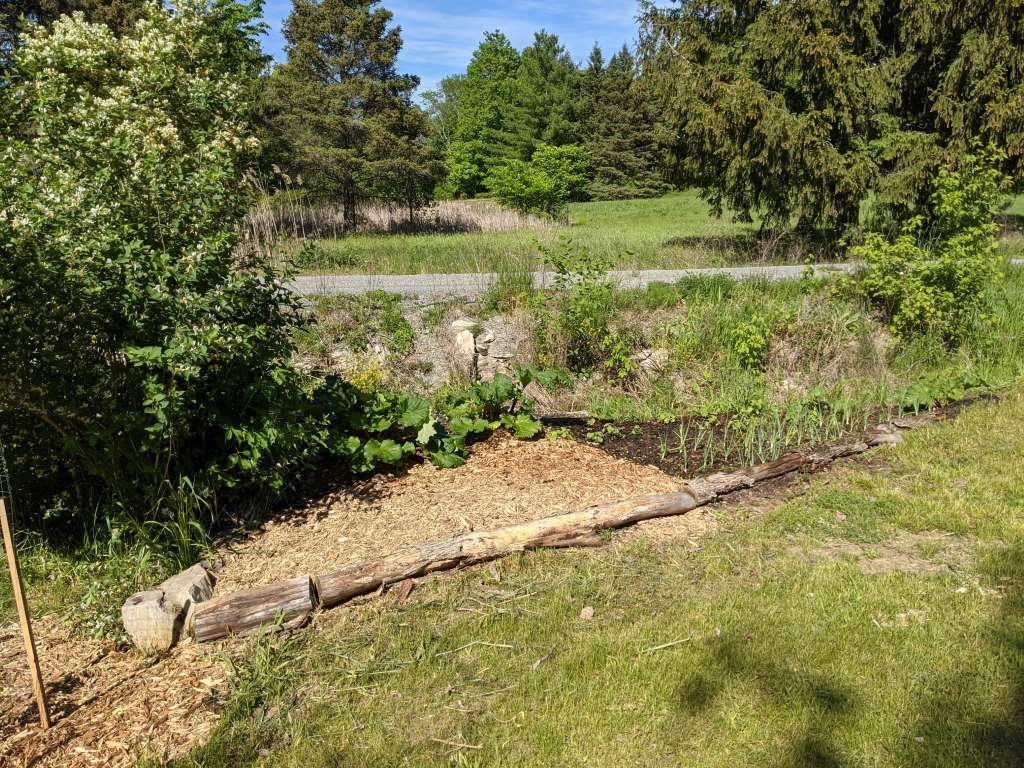
This, along with the asparagus bed, is really Paul’s domain. First and foremost it is the rapidly expanding rhubarb bed. This year there are also onions and a fallow area where we are trying to choke out the weeds with black plastic and mulch.
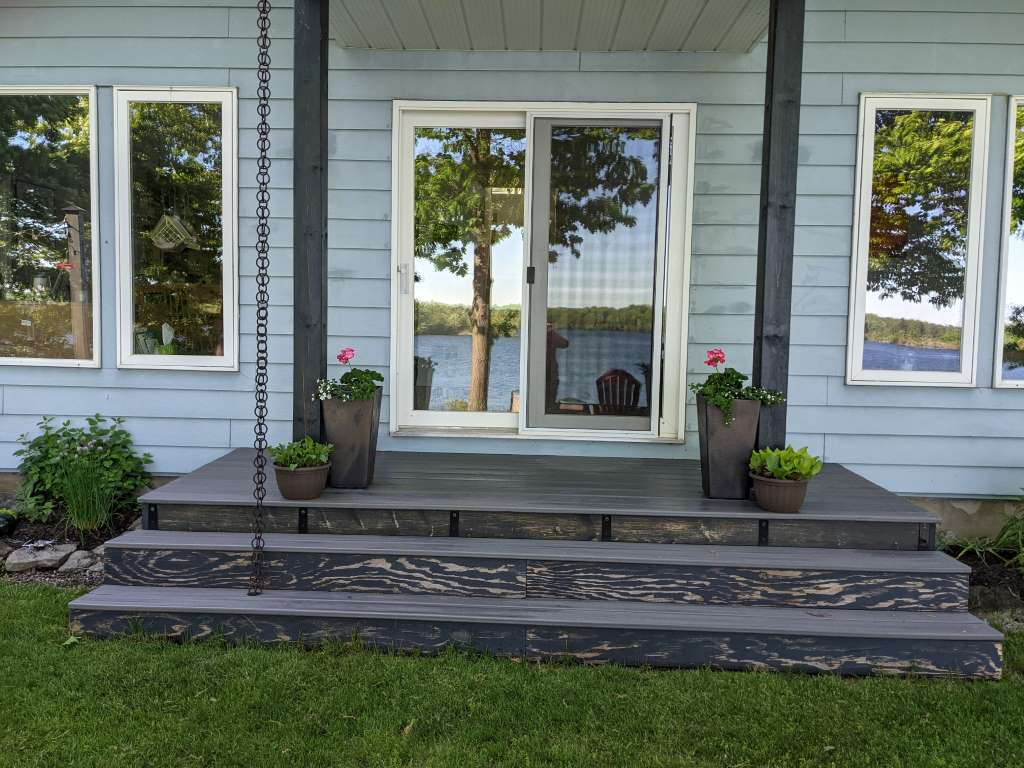
I finally seem to have cracked growing lettuce and arugula! These pots just got brought up from the vegetable garden, with the next just started. Sooo good! To the right is our main herb patch – lemon balm, two kinds of oregano, sage, chives, two kinds of mint, two kinds of rosemary, thyme, with basils various and cilantro in pots.
Asparagus rhubarb and lettuce have all done well and are being much enjoyed. Let’s hope most of the other vegetables do as well.
